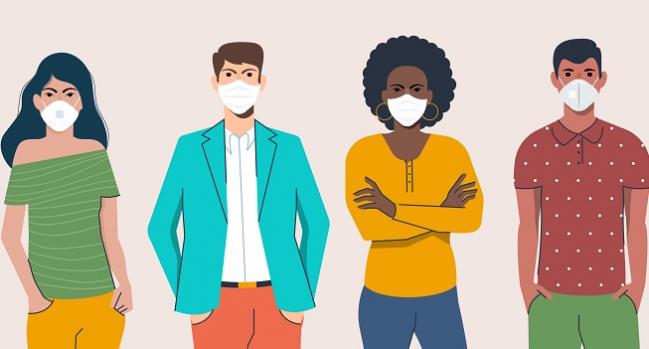CV Risk Factors Make Even Younger COVID-19 Patients More Vulnerable
In a population under age 35, 20% required ICU care, 10% were put on ventilators, and approximately 3% died.

Younger people with COVID-19 are less likely than those who are older to be hospitalized or need intensive care, but a new study, which set the age cutoff at 35 years, suggests that the same risk factors that portend poor outcomes in older patients pertain to younger ones as well.

“Although certainly the risk of severe outcomes is lower in younger people, those risks were still significant or meaningful, with 20% having to go to the ICU, 10% requiring a breathing tube, and 2.5% to 3% dying in the hospital,” lead author Jonathan W. Cunningham, MD (Brigham and Women’s Hospital, Boston, MA), told TCTMD. He noted that the mortality rate seen in the young COVID-19 patients is roughly double what’s expected for individuals in the same age range who are hospitalized with an MI.
More than one-third of the 3,222 adults ages 18 to 34 years in Cunningham’s study were obese, with about 25% having morbid obesity. There also were significant rates of diabetes (18.2%) and hypertension (16.1%). Studies of COVID-19 patients have repeatedly shown a high prevalence of CV risk factors in those who require hospitalization.
The study appears as a research letter published online today in JAMA Internal Medicine.
‘Young People Cannot Trivialize This Disease’
The analysis focused on patients hospitalized for COVID-19 in multiple US hospitals and discharged between April 1 and June 30, 2020. Their mean age was 28 years. Overall, patients were disproportionately male and Black or Hispanic. The median length of hospital stay was 4 days.
Among those who survived to discharge, 3% were moved to a post-acute-care facility. Of those who died or required mechanical ventilation, 41% were morbidly obese. According to Cunningham and colleagues, younger patients in the study with more than one CV risk factor had risks of mechanical ventilation or death similar to those of middle-aged adults with no risk factors.
I think that just underscores that young people cannot trivialize this disease, that they have to be vigilant. Scott D. Solomon
The 3% of patients who were not able to be discharged home and required transfer to another facility amounts to about 96 people under the age of 35 in this study alone. Senior author Scott D. Solomon, MD (Brigham and Women’s Hospital), said he and his fellow researchers were somewhat surprised by this finding.
“I think that just underscores that young people cannot trivialize this disease, that they have to be vigilant, and that while most young people will do well, some will get sick and some will get very, very sick,” he said.
Given the time of year, Solomon added that the study is an apt reminder that young adults are a vulnerable group like any other when it comes to this virus. “This is the group that appears to be having the highest incidence of the disease now. It's the group that is incredibly vulnerable because of returning to school and [other activities],” he said. “Wear a mask.”
L.A. McKeown is a Senior Medical Journalist for TCTMD, the Section Editor of CV Team Forum, and Senior Medical…
Read Full BioSources
Cunningham JW, Vaduganathan M, Claggett BL, et al. Clinical outcomes in young us adults hospitalized with COVID-19. JAMA Intern Med. 2020;Epub ahead of print.
Disclosures
- Cunningham reported grants from the National Heart, Lung, and Blood Institute during the conduct of the study.
- Solomon reports grants from Alnylam, Amgen, AstraZeneca, Bellerophon, Bayer, BMS, Celladon, Cytokinetics, Eidos, Gilead, GSK, Ionis, Lone Star Heart, Mesoblast, MyoKardia, Neurotronik, National Institutes of Health/National Heart, Lung, and Blood Institute, Novartis, Respicardia, Sanofi Pasteur, and Theracos; and personal fees from Akros, Alnylam, Amgen, Arena, AstraZeneca, Bayer, BMS, Cardior, Cardurion, Corvia, Cytokinetics, Daiichi-Sankyo, Gilead, GSK, Ironwood, Merck, Myokardia, Novartis, Roche, Takeda, Theracos, Quantum Genetics, Cardurion, AoBiome, Janssen, Cardiac Dimensions, Sanofi-Pasteur, Tenaya, Dinaqor, Tremeau, CellProThera, and Moderna outside the submitted work.


Comments